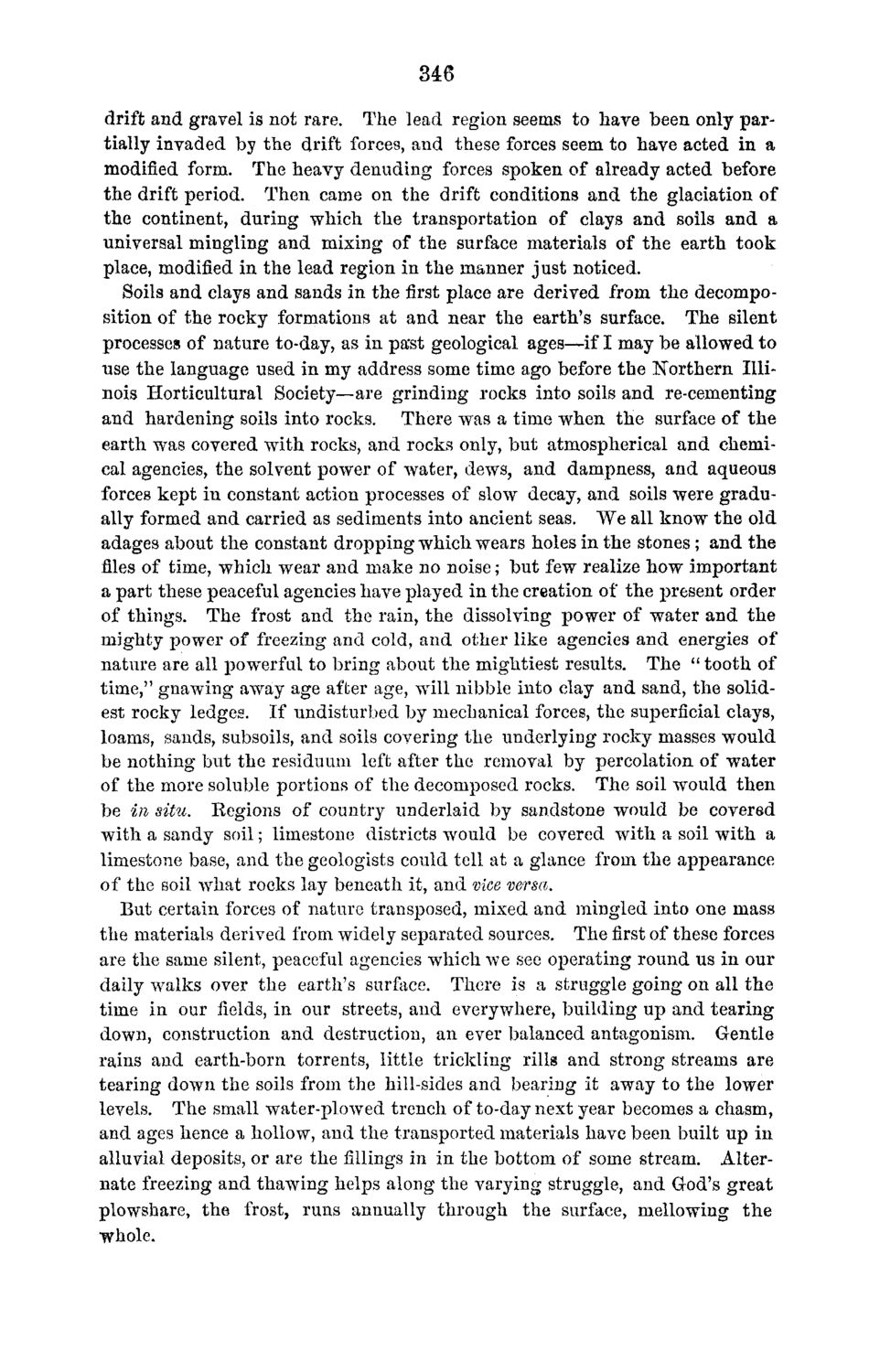| |
| |
Caption: Board of Trustees Minutes - 1870
This is a reduced-resolution page image for fast online browsing.

EXTRACTED TEXT FROM PAGE:
346 drift and gravel is not rare. The lead region seems to have been only partially invaded by the drift forces, and these forces seem to have acted in a modified form. The heavy denuding forces spoken of already acted before the drift period. Then came on the drift conditions and the glaciation of the continent, during which the transportation of clays and soils and a universal mingling and mixing of the surface materials of the earth took place, modified in the lead region in the manner just noticed. Soils and clays and sands in the first place are derived from the decomposition of the rocky formations at and near the earth's surface. The silent processes of nature to-day, as in past geological ages—if I may be allowed to use the language used in my address some time ago before the Northern Illinois Horticultural Society—are grinding rocks into soils and re-cementing and hardening soils into rocks. There was a time when the surface of the earth was covered with rocks, and rocks only, but atmospherical and chemical agencies, the solvent power of water, dews, and dampness, and aqueous forces kept in constant action processes of slow decay, and soils were gradually formed and carried as sediments into ancient seas. We all know the old adages about the constant dropping which wears holes in the stones; and the files of time, which wear and make no noise; but few realize how important a part these peaceful agencies have played in the creation of the present order of things. The frost and the rain, the dissolving power of water and the mighty power of freezing and cold, and other like agencies and energies of nature are all powerful to bring about the mightiest results. The " tooth of time," gnawing away age after age, will nibble into clay and sand, the solidest rocky ledges. If undisturbed by mechanical forces, the superficial clays, loams, sands, subsoils, and soils covering the underlying rocky masses would be nothing but the residuum left after the removal by percolation of water of the more soluble portions of the decomposed rocks. The soil would then be in situ. Regions of country underlaid by sandstone would be covered with a sandy soil; limestone districts would be covered with a soil with a limestone base, and the geologists could tell at a glance from the appearance of the soil what rocks lay beneath it, and vice versa. But certain forces of nature transposed, mixed and mingled into one mass the materials derived from widely separated sources. The first of these forces are the same silent, peaceful agencies which we see operating round us in our daily walks over the earth's surface. There is a struggle going on all the time in our fields, in our streets, and everywhere, building up and tearing down, construction and destruction, an ever balanced antagonism. Gentle rains and earth-born torrents, little trickling rills and strong streams are tearing down the soils from the hill-sides and bearing it away to the lower levels. The small water-plowed trench of to-day next year becomes a chasm, and ages hence a hollow, and the transported materials have been built up in alluvial deposits, or are the fillings in in the bottom of some stream. Alternate freezing and thawing helps along the varying struggle, and God's great plowshare, the frost, runs annually through the surface, mellowing the whole.
| |